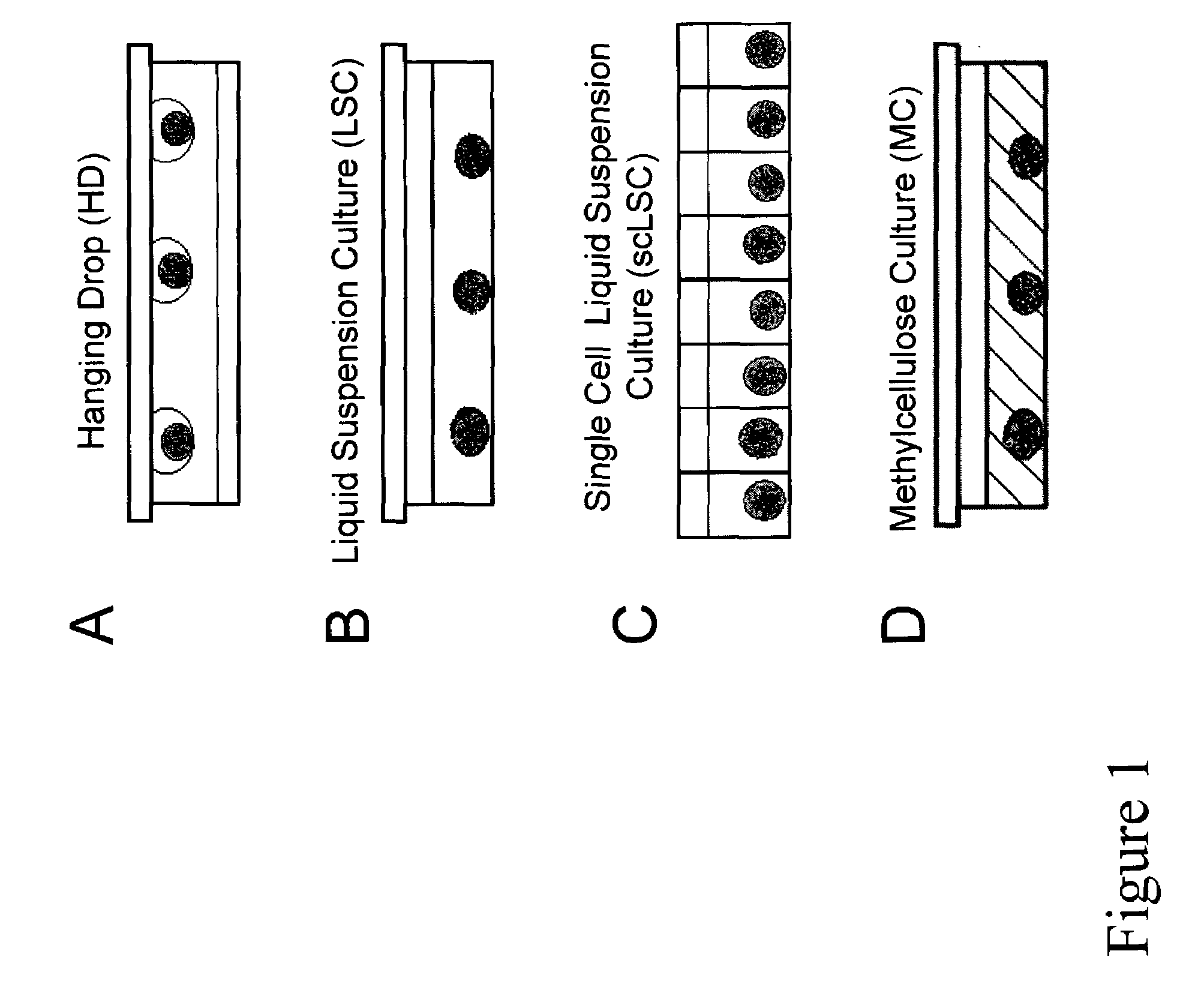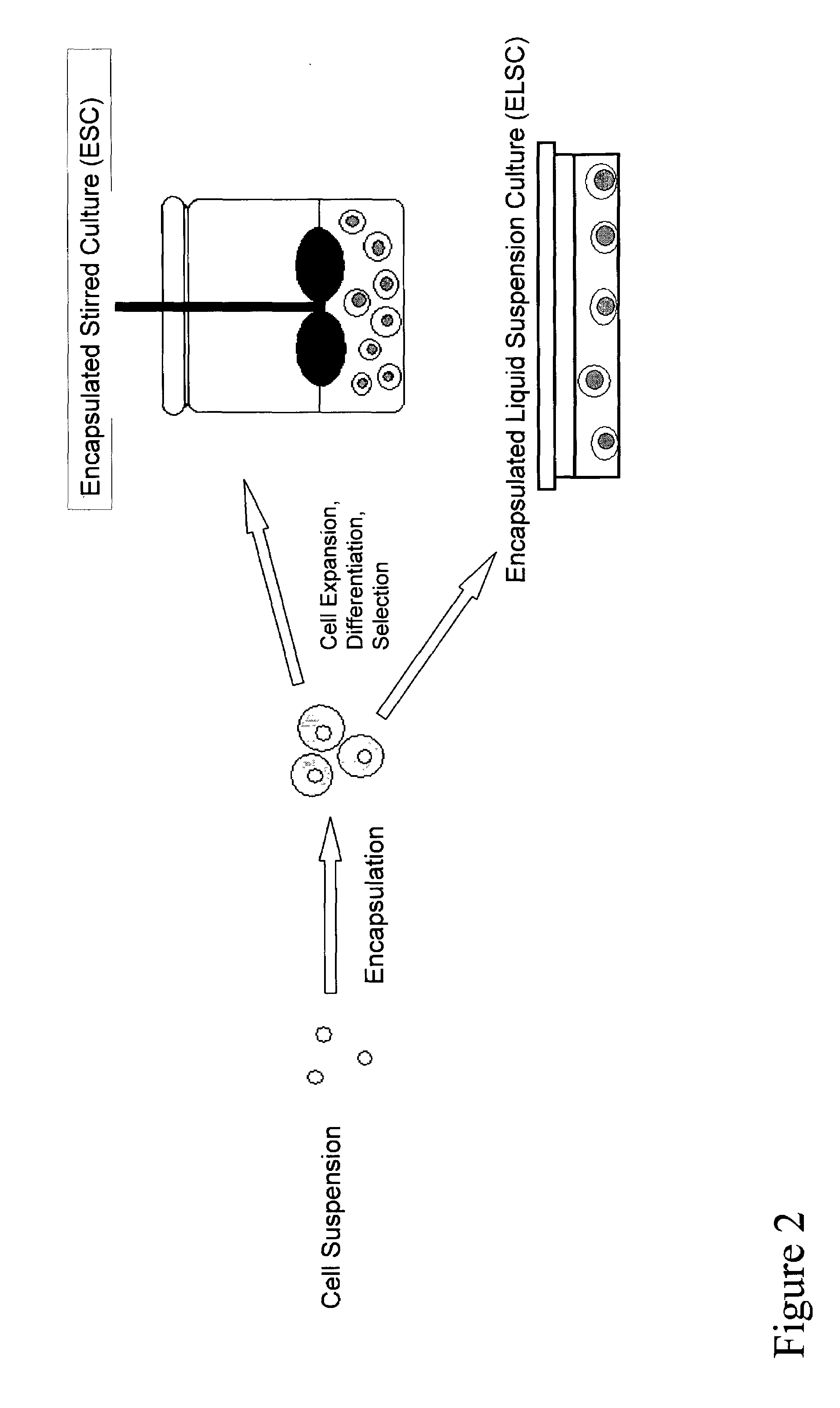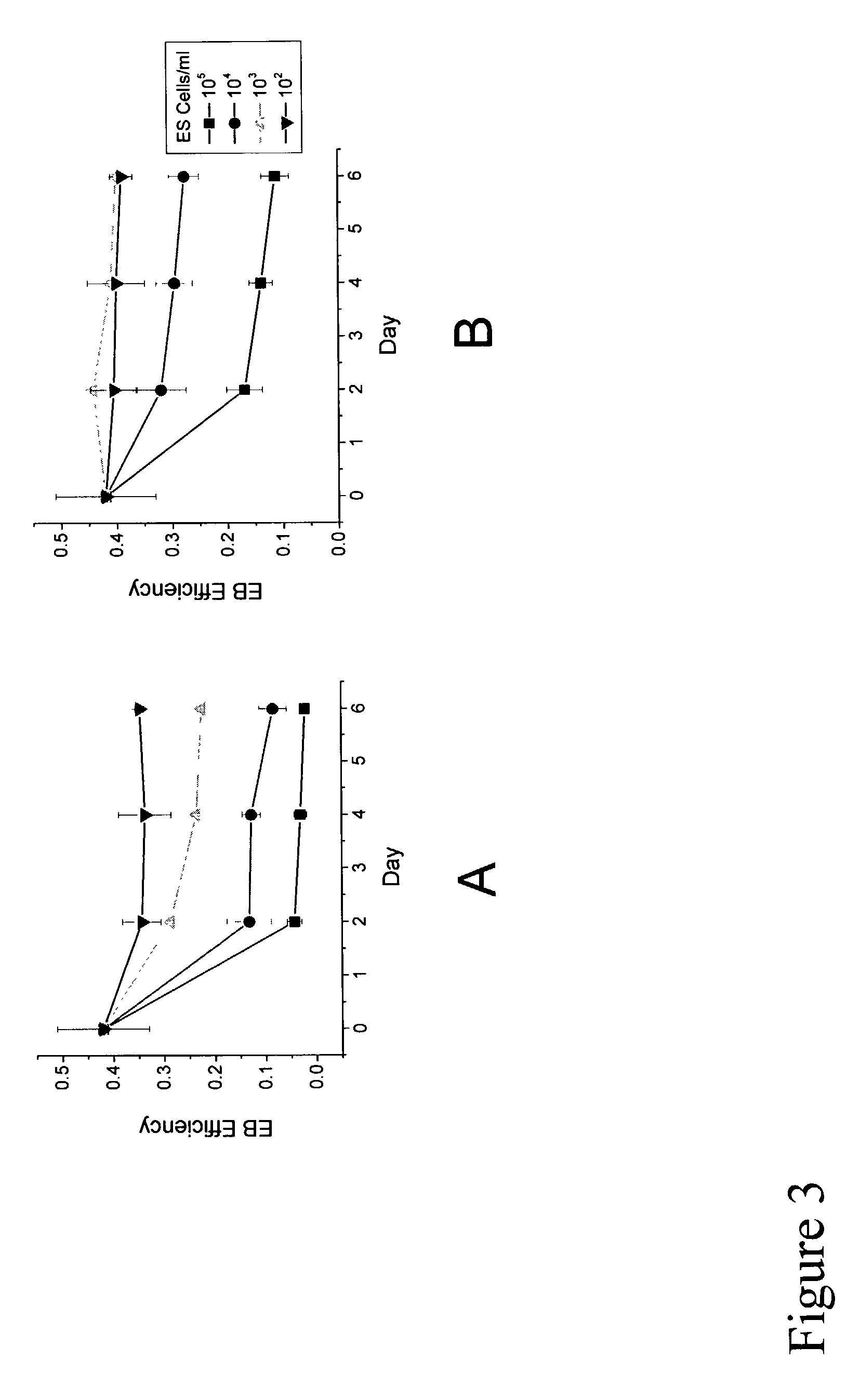Bioprocess for producing uniform embryoid bodies from embryonic stem cells in a high density bioreactor
a high-density bioreactor and embryoid body technology, applied in the field of generating cells and tissues, can solve the problems of inability to produce clinically, inability to control the cell culture environment, etc., to achieve the effect of improving product purity and reproducibility, and improving the quality of produ
- Summary
- Abstract
- Description
- Claims
- Application Information
AI Technical Summary
Benefits of technology
Problems solved by technology
Method used
Image
Examples
example 1
Effects of Cell-Cell Adhesion and EB Aggregation on ES Cell Culture
[0120]To assist in the development of a new bioprocess, the properties of ES cells and EBs that might affect bioprocess efficiency, net cell expansion, and cell fate decisions were investigated. EB formation, growth and development between different culture techniques were compared. Once an understanding of these basic parameters was obtained, guidelines to the design of efficient, scalable bioprocesses were developed.
(a) Some ES Cell Lines can form EBs from Individual Cells.
[0121]Preliminary studies focused on establishing the in vitro developmental potential of individual ES cells. In single cell liquid suspension (scLSC) and methylcellulose culture (MC), EB efficiency (number of EBs divided by input number of ES cells) have been reported anywhere between 2-15%. Because these values were so low, it was uncertain as to whether an individual ES cell could form an EB, or if EB formation occurred only when ES cells agg...
example 2
Preventing ES Cell-Cell Adhesion and EB Aggregation Results in Efficient Generation of Embryonic Stem Cell Derived Hematopoietic and Endothelial Cells
[0132]The overall schematic of one embodiment of the bioprocess of the invention for the scalable culture of ES cell derived tissues is shown in FIG. 2. First, undifferentiated ES cells are expanded under appropriate conditions. ES cells are then cultured in a bioreactor conditions that control aggregation and promote cell proliferation and differentiation. More specifically, aggregation of ES cells to induce EB formation is permitted and aggregation between cells within an EB is permitted. However aggregation between ES cells beyond that required to induce EB formation is prevented, and aggregation between separate EBs is prevented.
[0133]After an appropriate period of culture, under defined conditions (including growth factor and medium formulation, oxygen tension, pH, medium supplementation rates), differentiated cells are selected f...
example 3
Use of Bioprocess to Generate Differentiated Cell Types
[0145]Generation of various differentiated cell populations was performed using encapsulated ES cells grown in stirred suspension bioreactors compared to LSC.
a) Generation of Hematopoietic Cells from ES Cells.
[0146]Mentioned previously, early mesoderm development was tracked by Flk-1 cell surface marker expression on day 4, while hematopoietic progenitors were detected phenotypically by co-expression of CD34 and CD45 cell surface markers, or functionally via methylcellulose colony assays. Using our novel invention, various types of hematopoietic progenitor cells were detected, from multipotent myeloid cells (CFC-Mix), to further restricted myeloid and erythroid cells (CFC-Ep, CFC-Ed, and CFC-GM) (Table 7). ES cells were differentiated in ES cell media in the absence of LIF. Because the culture was performed in a stirred bioreactor, it is feasibly scalable to any desired volume, and applicable to close microenvironmental control
b...
PUM
| Property | Measurement | Unit |
|---|---|---|
| diameter | aaaaa | aaaaa |
| diameter | aaaaa | aaaaa |
| time | aaaaa | aaaaa |
Abstract
Description
Claims
Application Information
 Login to View More
Login to View More - R&D
- Intellectual Property
- Life Sciences
- Materials
- Tech Scout
- Unparalleled Data Quality
- Higher Quality Content
- 60% Fewer Hallucinations
Browse by: Latest US Patents, China's latest patents, Technical Efficacy Thesaurus, Application Domain, Technology Topic, Popular Technical Reports.
© 2025 PatSnap. All rights reserved.Legal|Privacy policy|Modern Slavery Act Transparency Statement|Sitemap|About US| Contact US: help@patsnap.com



